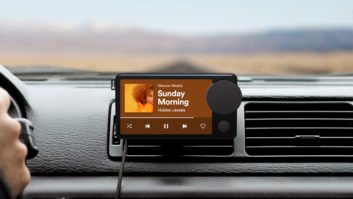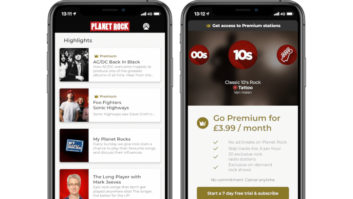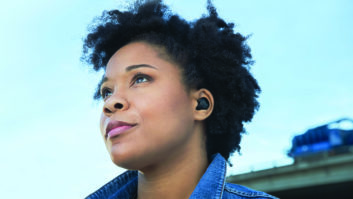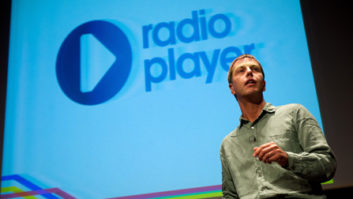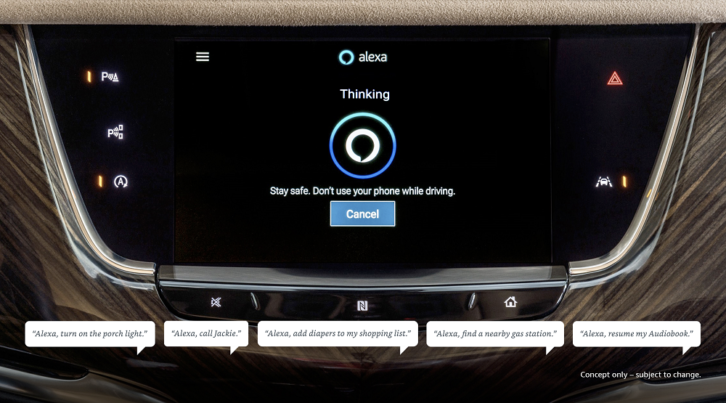
The prominence of voice assistants in new vehicles is making for a more hands-free environment for drivers and defining how they interact with media in the dashboard.
Companion voice-enabled technology like Alexa can also create a seamless infotainment ecosystem, allowing users to move freely from home and office to the connected car without interruption of services, which will likely influence in-car media behavior.
For radio broadcasters who quickly adopted the skill to allow Alexa-enabled home smart speakers to find their IP streams, the adoption of Alexa will provide a similar listening experience in connected cars, utilizing both the tuner and integrated LTE network IP connection in vehicles, according to Amazon officials.
The new world of connected cars is an ecosystem comprising over-the-air radio, streaming of FM and AM content, satellite radio, on-demand podcasts, audiobooks and music from digital service providers like Spotify, Apple Music and Pandora.
In-vehicle voice recognition systems like Alexa Auto are seen as critical tools to guide the media experience in the vehicle.
Arianne Walker, chief evangelist for Amazon’s Alexa Auto, is preaching to a wide audience these days, including radio broadcasters.
She offers words of encouragement to radio people trying to understand how in-car voice assistants will drive consumption of media.

“The idea isn’t to reinvent or duplicate functionality that already exists in the car, and radio is a great example of that. We see Alexa’s role as complementing that experience and not replacing it,” she said.
“The software is designed to be able to connect to the tuner that exists in the vehicle. But it also allows for people to call up the streamed content via the cloud when they need to.”
The dash can become more streamlined, Walker says, through the adoption of voice assistants. For instance, to receive an OTA signal, Alexa users simply connect to the radio tuner.
“Customers can use their voice to tune by AM or FM, a frequency, a branded name or preset. Satellite radio works much the same way,” she said. “You can even adjust the equalizer or change the media input totally.”
A majority of auto manufacturers have announced broad rollouts of Alexa and are embedding the technology in more new models, according to Amazon. Apple CarPlay, Android Auto, Google Assistant and Amazon Alexa are often included on many new vehicle models.
After-market add-ons such as Amazon’s Echo Auto are available for older vehicles. It allows the Alexa app on a smartphone to play through a car’s speakers via auxiliary input or Bluetooth connection. Garmin and Anker offer Echo Auto accessories that vary by price and features.
Alexa integration in a vehicle depends in part of the brand of car and the manufacturer, Walker said. “The automaker gets to choose what they feel the best integration for their customer will be to maximize that experience. Obviously, utilizing the radio tuner in the vehicle makes the most sense as a first option. But asking Alexa to find a station based on a skill like TuneIn or Radio.com will work, too,” Walker said.
The Alexa Auto software kit and vehicle integration make it possible for customers to interact with the technology without their phone and still connect with the cloud via the IP stream. Customers typically have to register with Amazon to access their accounts and to find all of their personalization they are accustomed to.
Walker says utilizing the radio tuner in a vehicle reduces any “potential latency” when using the IP connection and listening to a radio station’s stream.
“That means the vehicle media experience will be similar to what it always has been, but it will be voice-controlled without a driver having to take his or her hands off the wheel,” Walker said.
(Hybrid radio systems with the “service following” feature are also starting to show up in U.S. vehicles; they can switch from OTA to streaming too but do so automatically based on user preference.)
“Easier for customers”
Automakers began flirting with Alexa in 2017 for rudimentary tasks such as starting the vehicle remotely through Alexa in-home devices. Those offerings quickly expanded to more in-car options, Walker said.
Amazon does extensive research on how drivers and passengers engage with Alexa for things like navigation and media entertainment, but it doesn’t share the data, she said.
She said its research shows those who use Alexa and Echo Auto “used voice recognition to control music streaming services and the radio turner” most often.
“Entertainment is a huge use case in vehicles. It always has been, and we don’t see that changing. We see the continued use of radio in the dash well into the future.”
Alexa coexists with Apple CarPlay and Android Auto, Walker said, with the media experience again based on how automakers integrate the software and customer preferences.
[Related: “Burnell Is at Center of Ford Dashboard Development”]
Walker’s job is to spread word of Alexa to the broader industry. “Our Alexa Auto team is focused on the functionality of the experience in the vehicle. From the embedded Alexa Auto experience to those experiences in older vehicles with Echo Auto.
“Voice will be a huge part of the future in the car, and the continuity of Alexa voice from the home to on the go is critical,” Walker said.
And the car is an exceptional opportunity, she said.
“Voice really shines when used in an environment where people are focused on other tasks, like the vehicle. Voice can strip away complexities and minimize distractions and make the drive more productive and entertaining.”
Alexa in the car brings customers the convenience of an in-home smart speaker that can play music, set reminders, control smart home appliances and access tens of thousands of skills built by third-party developers, Walker said.
“We’ve seen a bunch of momentum with announcements from Ford, GM, Toyota, BMW integrating Alexa directly into their vehicles. They are developing connected car skills to allow customers to interact with their vehicles via an Alexa-activated device.” Amazon recently launched Alexa integration with Volvo trucks.
Walker believes broadcasters can benefit from voice technology in the car since Alexa can segue programming from the car to the home through any Alexa-enabled device, she said.
“There is a great opportunity to increase radio listenership in the home by using the cloud-based skill via TuneIn or Radio.com to play a favorite radio station. That’s a nice advantage for radio.”
There are also ways to use Alexa to customize local listening habits, Walker said. For example, by asking Alexa to play NPR it will prompt you to find local stations, she said.
“I would tell radio broadcasters that by having Alexa in the car, it just makes the listening experience ever easier for customers. They can access radio stations through the tuner or through the cloud via an audio stream. Streaming strategies will be important” for broadcasters, she said.
“Broadcasters will have the advantage of having customers who drive outside the signal area still having the capability to hear their favorite radio station’s stream. That’s an important combo.”
